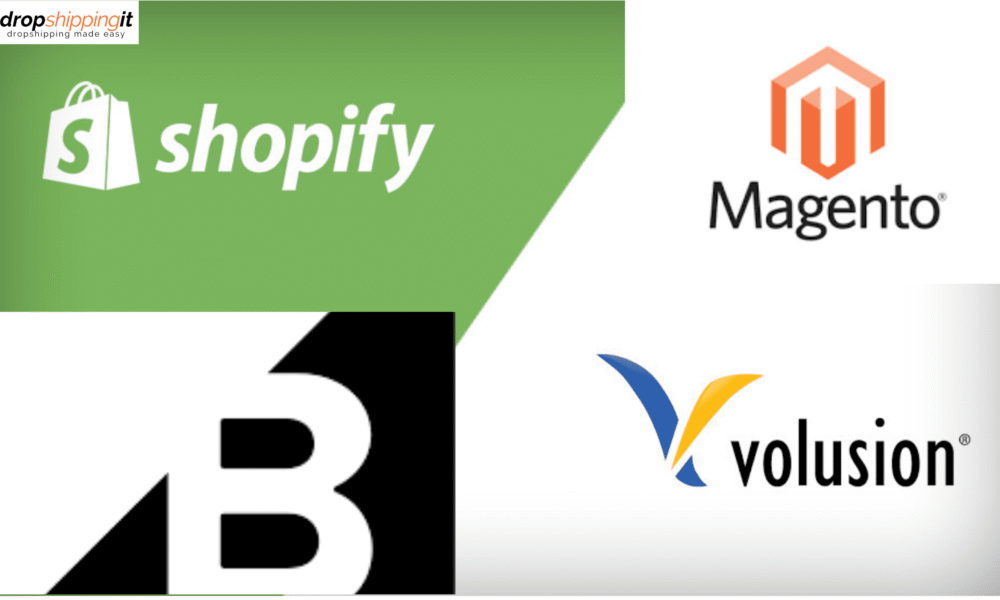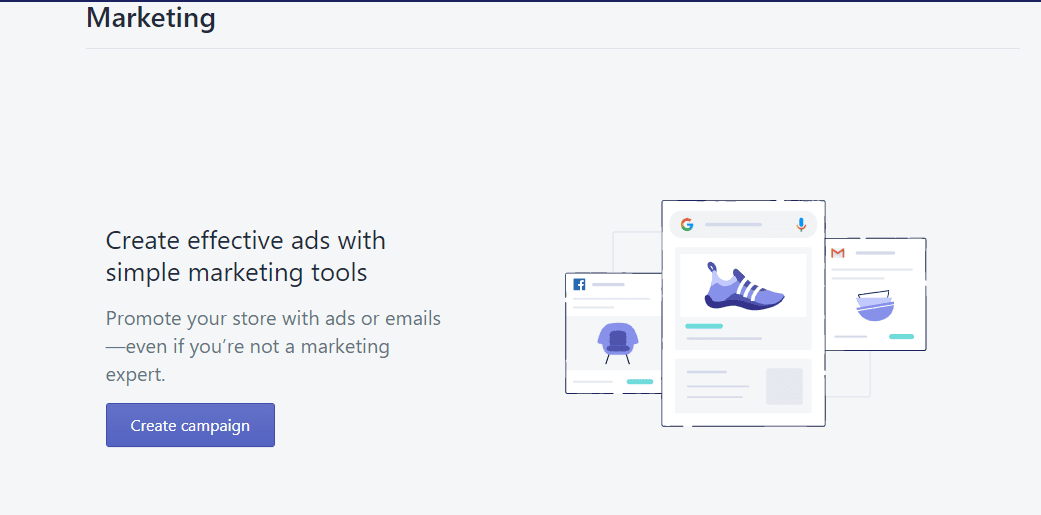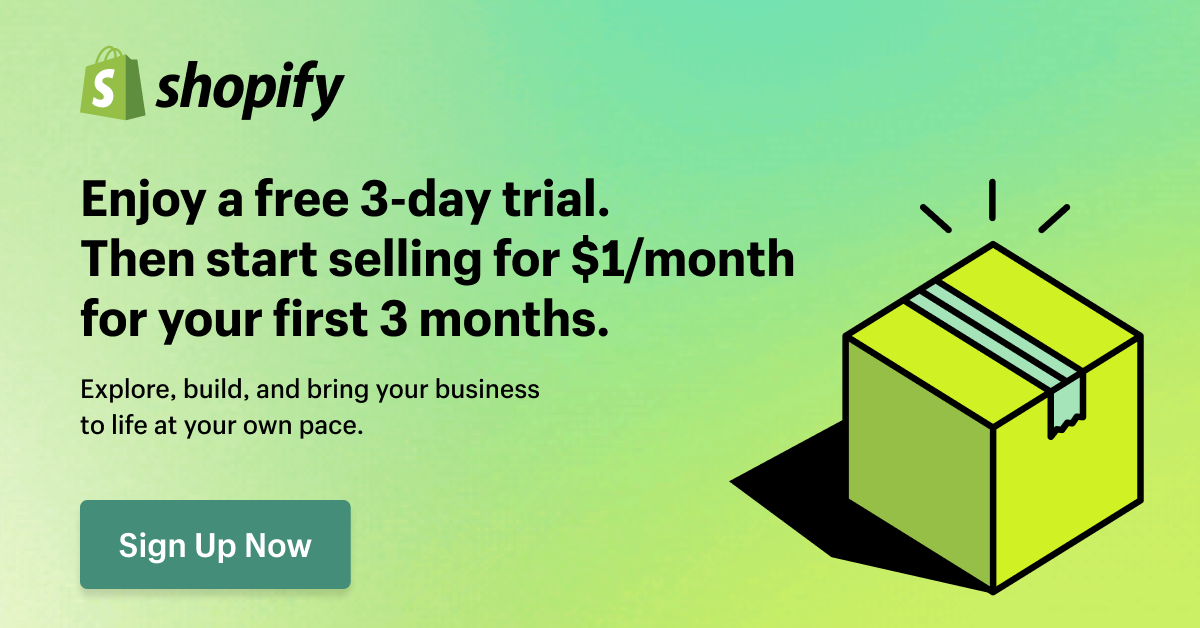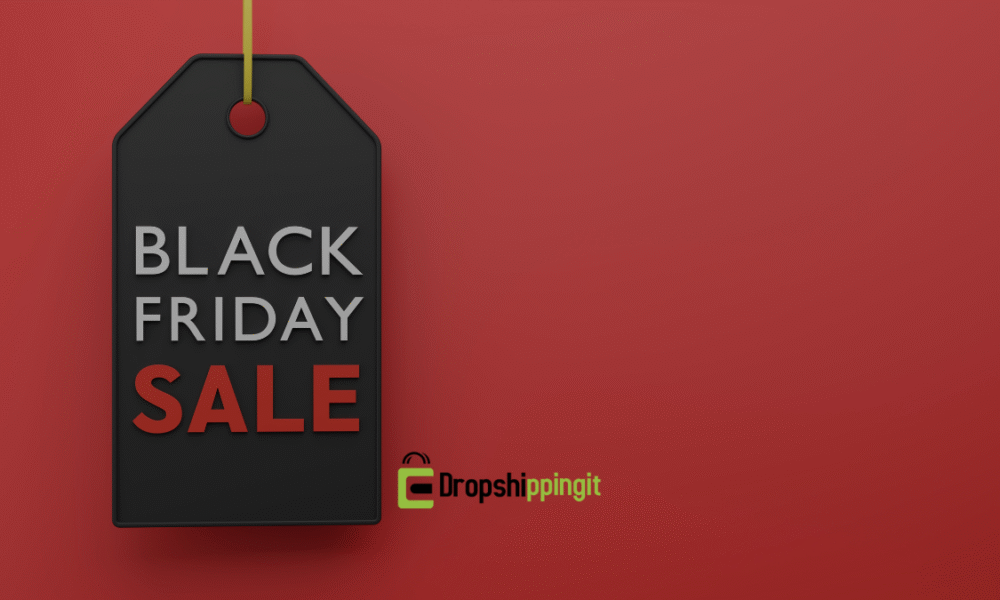Do you want to know how to edit tags in Shopify? You…
Is Shopify The #1 Ecommerce Platform?

2. Is Shopify The #1 Ecommerce Platform?
Moving along, we will look at the best ecommerce platform where you can start your dropshipping business. Once you have your business model figured out, the next logical step is to determine what ecommerce platform you will use.
Again, this is for newer people because experienced people know the ecommerce platforms, and you probably already know what you want to do. You can also read about Choosing your ecommerce business models.
But, I wanted to create this post to highlight what’s out there in the marketplace and what I believe are the best eCommerce platforms for anybody to get started, regardless of the business model you choose.
So, there are many eCommerce platforms out there. Alright!
They are considered probably the top four.
These are the biggest players in the eCommerce world. They all have good platforms and solutions that differ slightly in what they offer and how they do what they do, but they’re all big platforms.
Shopify has the lion’s market share right now, but Bigcommerce, Woocommerce, and Magento also have their own. I know people who are loyal followers of what they do.
WooCommerce is a WordPress platform. So, people from a WordPress background want to go with WooCommerce because they understand WordPress.

Also, Volusion, 3d Cart, and Wix have their eCommerce platform. Big Cartel PrestaShop does a bunch of them.
But not all are created. Equally, that’s the most important thing to remember as a person, regardless of your level, whether you already have experience, your own retail small business, or whether you’re brand new.
You need a platform that is going to be the easiest to use. That’s going to be the most user-friendly, that’s going to have a balance and be affordable.
You know, monthly payments versus whatever fees you have to pay payment processors, and you know, all these types of things also go into choosing a platform.
So for me, I have experience working in eCommerce for a few years, and I’ve used a few platforms that have a lot of experience working with many other people.
So, I believe there is a clear winner out there; from what I’ve seen, the best eCommerce platform is Shopify.
Shopify is that, as I said, has the lion’s share of the market right now. That is obvious because they have differentiated itself as the go-to platform for eCommerce no matter what type of business you’re trying to build.
Table of Contents
Why Shopify Ecommerce Platform?
I will give you some reasons; I’m not just going to base this on my theory. Okay! It has a really easy unified user interface, which is so important. You can’t underestimate that an interface can make or break a platform.
Is Shopify The #1 Ecommerce Platform?
Shopify is an e-commerce platform that helps businesses build their online stores. Shopify merchants can sell products or services on social media sites and marketplaces. Shopify also sells point-of-sale (POS) software that small businesses can use in their brick-and-mortar stores.
It has to be easy to navigate, use, and set up. So, one of the reasons I love Shopify is because it’s easy. You don’t have to be experienced, and you don’t have to know your technical background and coding.
Those things help, but you don’t have to know or understand them to become a Shopify Pro; they’ve set up a very easy-to-understand user interface and multiple plans.

So, there are plans no matter what level you’re at in your business, alright, and $29 a month to operate a store that can be making thousands of dollars a month is extremely reasonable. There’s also, depending on the payment processor you use, and we’ll talk about that.
Shopify offers direct integration for many of you, like the US, Canada, the UK, and some European countries. I’ll talk about this.
But then there’s a theme that you pay based on your transactions, but that’s any payment processor. So, you must also consider what payment processor you want to use.
Shopify Apps
One thing that differentiates Shopify is that hundreds of apps exist. There are thousands of apps, and there are over 2000 apps that are on the Shopify app marketplace.
These apps are just different things you can install to your store that will give you more functionality and customization to create a unique experience, increase conversions, sell better basically, and sell more on your store. I think that there’s another app.

Marketplace Tick competes with a simple setup, great hosting, and load times. Now you know this is like the super experts out there.
You understand that Shopify is a shared hosting platform, meaning all the stores using Shopify are shared within the same Shopify server.
There’s a slight disadvantage to that, in the sense that you’re not controlling your server, but in my opinion, you know you don’t need to worry about it.
Massive brands are running on Shopify, like Tesla, RadioShack, and Jim Shark; a massive brand, Kylie Cosmetics, is getting tons of traffic and running just fine on the Shopify shared server.
But it is important to note that if you want to use your hosting, Shopify doesn’t let you do that.
Fantastic support
I think that Shopify support is hands down. I’m like, and compared to any other app or software I’ve used, they’re always there; they’re easy to chat, connect, and get an answer, even if it’s an answer you don’t like.
You know you’re always going to get an answer; you’re always going to have to be able to find somebody. They even include an hour of free tech support for any brand-new store, like an hour of not even tech support – Tech support is always free, but there’s an hour of design customization for free that you can get from Shopify.
They have Shopify gurus to help you set up your store, and the support is great. This is a big difference between communities and training because whatever you want to learn to do, you have to have support.
You have to have a community, and you don’t have to, but it makes it a lot better, it makes it a lot better of a journey for you, a lot more inclusive.
Shopify has an amazing blog; they have case studies, they have fantastic training, like honestly really impressive stuff, and there are also a lot of communities out there that are built around people using the Shopify platform.
So, you get a lot of direct feedback, interaction, and training from others who can share their successes and failures and what works for them, tips, and advice that you can take direct action and apply because you’re using the same platform.
Right! Again, it works for all business models smoothly, no matter if your dropshipping channel, demand selling your products, digital products, or subscription products like you can integrate any business model into the Shopify platform.
Professional Themes
There are a few things that I want to highlight as we go through this. Shopify has free professional ecommerce themes; now, that’s not to say that other platforms don’t, but I think Shopify has some fantastic out-of-the-box plug-and-play themes.
I think it’s really good for getting started, having a professional, clean, nice-looking theme. And that’s the advantage!
You want your store to look professional, and with a Shopify store setting up using one of their free themes, these themes don’t even cost money. You can have a store just created a week ago that looks like a well-established, well-branded, very professional store.

So, that’s a major advantage to using these free themes. They also have paid themes that you can use as well if you want to get a little bit more, a little bit more customization. These apps aren’t all free; there are some free and paid apps, but there is something.
For everything in here, you can see their categories from finding products, different channels you can directly link with Shopify like Pinterest and Amazon and Etsy apps for your Store, apps to help you, marketing apps to help boost sales and conversions orders like all these apps.
You can see them all, which is a huge advantage because you want to customize and create your brand and store however you want.
When we get to the apps, because it can be a little overwhelming, there’s so much out there, and not all apps are great.
Now, they all have their review system, so you can see which ones are better than others, but again, this is so valuable because short-cutting your process to being able to build a world-class, super powerful, turbocharged store.
It’s like a difference between owning a Hyundai or a Ferrari and nothing against anybody who owns a Hyundai, but there’s a huge difference in the performance of those two types of machines.
It’s the same thing with your store; you want a store that’s calibrated at the maximum level of performance that it can be, and with over 2500 apps in the Shopify store, there’s just like you’re going to have that high-performing machine.
Now, let’s talk about some of the specifics. These are things that you should consider and look at when Choosing ecommerce platforms. Shopping cart: This is huge; this is where people check out, and this is where they input their credit card to be able to make a payment.
And the shopping cart on Shopify, I want to highlight some of these benefits because I think it’s one of the things that helps them stand out. I took it for granted for a long time how smooth their shopping cart process is, but it’s not as simple as they make it seem.
SSL Encryption
So, they have the free SSL certificate; some platforms don’t even have that included. Shopify includes this for free, which they can do because of shared hosting. If it was not shared hosting and you have to get your hosting, you’ll have to get your certificate, and that’s something that’s an extra level of a little extra layer of what you need to do.
Payment Gateways
They can integrate with a hundred different payment gateways now; a lot of payment gateways come down to what’s available in your part of the world, like I said, you know, for countries like the US, Canada, United States, Germany, Japan, Singapore, or France, I believe Australia maybe, I’m not sure about Australia, but they all offer Shopify payments.

Shopify payments are Shopify’s integrated solution that works directly with Stripe and allows you to set up and start processing payments.
In other countries, there are still over a hundred external payment gateways that you can integrate with.
Shipping Set Up

Some are better than others, you know, and that’s going to come down to what you choose, but no matter what, there should be an option for you to integrate.
You can offer free shipping, and you can offer multiple tiers of shipping, which is nice. You can have to ship. You could say orders over $75 free come with free shipping, or you know, order three items, and you get free shipping, so you can completely customize and control how the shipping process works, which is advantageous.
Multiple Languages
The online checkout store, as you see, comes in 50 plus languages, and you can translate your store; there are multiple apps to translate languages, so there’s a lot of functionality there, depending on who you’re selling to where in the world or if you’re selling all around the world.
ecommerce platforms: Automatic shipping rates
If you want to integrate, like, say, you’re a small business owner, or you are selling your product, and you’re going to be packaging and shipping your product, then you’re going to want to be able to integrate with one of the major carriers. So, they have that automatic integration, UPS, USPS, FedEx, DHL, that you can do.

Abandoned checkout recovery
This is a cool feature, but I have a better recommendation of what you should use when it comes to abandoned carts, so we’ll talk about that in the future if you don’t know what that is yet because you’re brand new. Don’t worry, you’ll know by the end of this month.

Flexible shipping rates are, as I mentioned, already automatic taxes. Again, that’s nice. You don’t have to worry about it; you can set your tax rules. I’m not a tax attorney, so I’m not even getting into that, but Shopify lets you handle that kind of stuff based on your country and state if you’re if your country has States.
Store management
Managing everything from customers to your accounts to fulfillment centers, like there’s so much flexibility here. I’m not going to go through every single point, but I want you to see that one of the other reasons I really like Shopify is just the management of what you can do.
It’s very easy to process refunds; if you need to process, you can do this all right from your smartphone, which, again, their smartphone app is good. So, you can watch your store set up and run it right from your phone.
Order Processing

So, as soon as an order is placed, that order is routed to your supplier, and then your supplier can fulfill that order and then update the order in your store and tracking number. This is all happening automatically behind the scenes.
Again, that’s not something to take for granted; some platforms don’t do that. That’s powerful and, again, depending on your business type.
SEO & Marketing Aspect
This is an important one – the marketing and SEO. So, let’s talk about both. Let’s talk about SEO. Now, I will say this: WordPress is pretty much the undisputed best SEO platform. I don’t think anybody will dispute me on that, but Shopify is good.
They have a well-built search engine optimization, just already customized right within the platform, and that comes down – there’s some technical stuff about how they allow you to set your page up, and you can customize your title tags and meta tags.

Do they generate a sitemap with your products and your blog post? Yes, they do, and there are even apps that help you take it a step further if you want to optimize and turbocharge your SEO.
This is important for people who might be getting into a specific niche because you know that can help in the long term. SEO is a long-term game, but it can help in the long term by bringing organic traffic into your store to make sales.
On the marketing side, you can do great things like discounts; you can create multiple discounts and gift cards integrate directly with all the major social platforms.
Product Management
And then, when it comes to your products, again, you have complete control of how you want to set up a product. Alright! When you import a product or set up your product, you can track inventory if you want to.
You can do multiple variations; each variation you can break down by price, weight, and SKU, however, you want to do that. You can organize products by categories, multiple things here, as you can see.
You can even sell digital products and again look nice; there is an unlimited product, there’s no limit to the number of products, and within that, even cooler – not only is there no limit to the number of products, that all those products could have multiple variants in multiple different you know prices and lots of different images.
Start a free 3 Day trial and enjoy 3 months of Shopify for $1/month Instead of $39/month on selected plans. Sign up now
So, like, your store can be really powerful and robust, and you don’t have to worry about the hosting, you don’t have to worry about crashing or load times or that kind of stuff because, like, it’s just all integrated smoothly on Shopify’s existing platform server.
Web Hosting
As mentioned, this brings us to web hosting, so there’s unlimited bandwidth. That means you can have unlimited visitors; even if you’re on the most basic plan, you can have as many visitors as you want.
Now, you would probably want to upgrade to a higher plan because there are reasons that that makes sense, but it’s just nice to know that they don’t limit you on that.
You can create automatic email forwarding and then all this other stuff that’s just, you know, level one PCI compliant, you know, that’s for credit cards as you can see, they give you the SSL certificate.
You get instant upgrades into your store, always upright no matter what, and while they have had situations in the past where there’s been downtime on the store, meaning like something might have gone wrong, or the server might have gone down, it’s always up quickly, 24/7 monitoring.
Analytics
Another important part of having the store. So, having dashboard analytics I like this because you can see your traffic. One of the things that they do well is they show your – like dashboard.
You can monitor the progress from a simple level. You can get more in-depth with analytics with Google Analytics and super metrics and install things to break it down to the nitty-gritty.
When you get to a higher level, you might want to do just traffic ad spend and selling, but at the most basic level, it’s pretty advanced with you know what you can track and see.
You can generate reports to see what’s selling, where it’s selling, and when it’s selling, like you can see all of this stuff right within your Shopify dashboard.
How many visitors, how many returning customers, what is my purchase conversion rate, all these types of things? What is my top-selling product?
What is the landing page people are visiting the most? Okay! So that’s important, all built-in, and you can see that.
Pricing
Finally, looking at the pricing tiers of Shopify.
So as you go up in the plan, your transaction fee drops down, which makes sense, right like if you’re doing, say, when you’re starting, this is obviously where everybody starts, but when you get to say you’re doing fifty thousand dollars a month in sales, that point five percent is going to make up for the difference.

Right, so it makes sense for being here; this is a nice middle ground because this includes the one main thing not included here: full reporting functions.

Now, here’s the free trial link for you to be able to start.

I hope I gave you an in-depth look because it is important, and you shouldn’t take it for granted. So that’s why I wanted to cover all of those details and, hopefully, by now, have convinced you that Shopify is where you should be.

So, you can sign up with that free trial now or in the future when you’re ready to build your store. Let me know if there is anything that wasn’t covered in this ecommerce platforms post that you think is helpful.
Which ecommerce platforms do you think I left out?
Start Shopify For Only $1 A Month
Sign Up For A Free Trial and enjoy 3 months of Shopify for $1/month on select plans.

Try Shopify free for 3 days, no credit card is required. By entering your email, you agree to receive marketing emails from Shopify.




Comments (0)